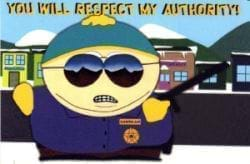Find semantic links in a web page
Imaging a visitor that enters his website URL into a textbox and when he clicks the submit button, you are able to retrieve all kinds of information from the guy. His name, company info, online profiles, interests etc. all this from just a URL. It’s actually pretty easy if the website contains information about FOAF, APML or SIOC documents.
What you have to do is to download the HTML from the website and look for <link> elements in the header that matches FOAF, APML or SIOC type links. Then retrieve the URL to those documents from the href attribute and load it into an XML document. Now you can use XPath to find all the information you need.
Here’s is what a FOAF link element looks like:
<link type="application/rdf+xml" rel="meta" title="FOAF" href="http://example.com/foaf.xml" />
SIOC and APML links uses the same attributes in the same way, so we can use the title attribute to figure out which kind of document it is. All we need is a method that uses regular expressions to retrieve the document URLs from the HTML.
The code
This is a method that finds all the semantic links of a certain type in a HTML string.
private const string PATTERN = "<head.*<link( [^>]*title=\"{0}\"[^>]*)>.*</head>";
private static readonly Regex HREF = new Regex("href=\"(.*)\"", RegexOptions.IgnoreCase | RegexOptions.Compiled);
/// <summary>
/// Finds semantic links in a given HTML document.
/// </summary>
/// <param name="type">The type of link. Could be foaf, apml or sioc.</param>
/// <param name="html">The HTML to look through.</param>
/// <returns></returns>
private static Collection<Uri> FindLinks(string type, string html)
{
MatchCollection matches = Regex.Matches(html, string.Format(PATTERN, type), RegexOptions.IgnoreCase | RegexOptions.Singleline);
Collection<Uri> urls = new Collection<Uri>();
foreach (Match match in matches)
{
if (match.Groups.Count == 2)
{
string link = match.Groups[1].Value;
Match hrefMatch = HREF.Match(link);
if (hrefMatch.Groups.Count == 2)
{
Uri url;
string value = hrefMatch.Groups[1].Value;
if (Uri.TryCreate(value, UriKind.Absolute, out url))
{
urls.Add(url);
}
}
}
}
return urls;
}
Example
To find all the FOAF links in a page you can write something like this:
using (WebClient client = new WebClient())
{
string html = client.DownloadString(txtUrl.Text);
Collection<Uri> col = FindLinks("foaf", html);
foreach (Uri url in col)
{
XmlDocument doc = new XmlDocument();
doc.Load(url.ToString());
Response.Write(Server.HtmlEncode(doc.OuterXml));
}
}
If you want to search for APML or SIOC then just replace “foaf” with either “apml” or “sioc” in the method parameter. You might also want to take a look at my experimental FOAF parser class.
 Rule #1. Buy the most expensive pair of
Rule #1. Buy the most expensive pair of